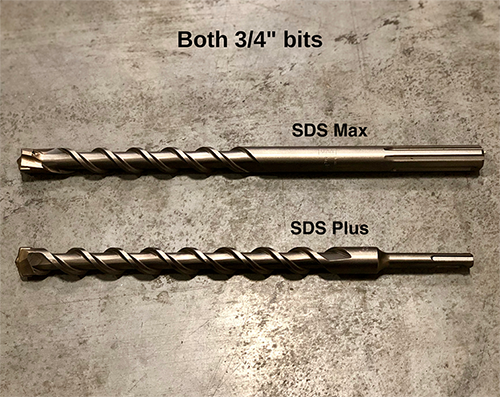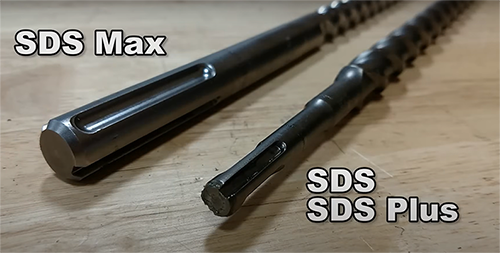What are the differences between SDS Plus, and SDS Max drills?
2023-05-26 | Blogs
What are the differences between SDS Plus, and SDS Max drills
SDS drill bits have a series of slots, or indentations along the shank which allow it to move freely along its length when gripped in the chuck. The bit is retained by sprung ball bearings which locate into the slots, then allowing the bit to move forwards as a result of the drill's hammer action
The diameter of SDS-plus shank is 10 millimeters.
The diameter of SDS Max is 18 millimeters.

The SDS system is said to have been developed by Hilti and Bosch in Germany in the 1970s. At the time, it was a major advancement in the clamping of drill bits, thus allowing holes to be drilled more efficiently.
There are three standard sizes of SDS: SDS-plus (or SDS+), SDS-Top and SDS-max. SDS-plus is the most common by count of tools manufactured, with masonry drills from 4 mm diameter to 30 mm (and from 5/32" to 1-1/4") diameter ordinarily available. 
▪ The shortest SDS-plus masonry drill bits are about 110 mm overall length, and the longest 1500 mm.
▪ SDS-max is more common for larger rotary hammers and chipping guns, and common sizes start at 1⁄2 inch (13 mm) diameter up to 1 3⁄4 inches (44 mm) diameter. Standard lengths are 12 to 21 inches (300 to 530 mm).
▪ SDS-Top has been largely phased out in North America and is not common except for older tools.
▪ Hilti's TE-S system is similar to these SDS systems, but is designed for chipping only (no rotation) in tools for applications larger than could be handled by SDS-Max (e.g. demolition of concrete walls or floors).
SDS Plus
Most commonly, SDS Plus bits are used for holes drilled in masonry and concrete (carbide bits) up to 1” in diameter. They can often be found over 1,” but most contractors move to a drill with more power when drilling holes larger than that.
SDS Max
Industry standard says that any hole over 1” is cut with an SDS Max bit. Of course, there are plenty of bits smaller than 1” that can be run with an SDS Max drill, but it can often be overkill. These do allow for a much longer length as well. You will often see bits as long as 36” overall or some may even have an extension that allows you to cut well over 4” diameter.

Related News
Choosing the Right Grease for Your Rotary Hammer
Rotary hammers are powerful tools designed for demanding applications in construction and masonry work. To keep these tools operating smoothly and efficiently, proper lubrication is crucial. One essential component for maintenance is the choice of grease.
What are safety rules when using a rotary hammer?
Using a rotary hammer involves handling a powerful tool that can be potentially hazardous if not used correctly. Adhering to safety rules is crucial to prevent accidents and ensure a safe working environment. Here are important safety rules when using a rotary hammer:
Unlocking the Power: What Are Rotary Hammer Drills Used For?
Rotary hammer drills have become indispensable tools in various industries and DIY projects, thanks to their versatile nature and robust capabilities. Let's delve into the details of what makes these tools so unique and the wide range of applications they serve.





